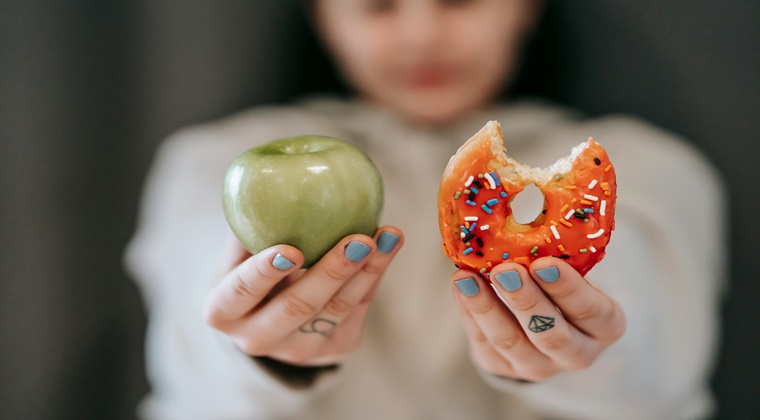
Let’s be honest: Whether it’s that afternoon candy bar, evening bowl of ice cream, or sneaky soda at lunch, sugar cravings hit hard—and they hit hormones. Guys, this isn’t just willpower failing; it’s blood sugar instability, hormone fluctuations, stress, and nutritional gaps working against you.In this in-depth guide, we’ll unpack:
- 🔥 Why men experience sugar cravings (and why they’re stronger in certain life stages)
- 🥗 Eight high-impact, science-backed strategies to eliminate the cravings
- 💊 Supplements, meal plans, and lifestyle habits tailored for men
- 🎯 A bonus—natural support you can use to curb cravings now
Why Men Struggle With Sugar Cravings
Men’s bodies process sugar differently based on their hormones, muscle mass, metabolism, and lifestyle factors. Here’s what’s often working behind the scenes:
1. Testosterone & Insulin Sensitivity
As men age—especially after 30—testosterone dips slightly, insulin sensitivity drops, and the body begins to process sugar less efficiently. This can lead to blood sugar spikes and crashes within hours after eating.
2. Muscle vs. Fat Ratio
More muscle means improved glucose disposal (sugar gets sent into your muscle cells instead of turning into fat). Men tend to lose muscle over time, meaning sugar lingers in the blood longer.
3. Stress & Cortisol
Cravings are often a stress response. When cortisol rises from work, life, or even missed sleep, the brain searches for quick energy—typically sugar or carbs.
4. Nutrient Deficiencies
Lack of key nutrients like magnesium, chromium, and B-vitamins can intensify cravings. These minerals play vital roles in glucose metabolism and neurotransmitter function.
5. Habit and Reward Loops
Sugary bites trigger dopamine, the “pleasure neurotransmitter.” After repeated behavior, your brain associates stress relief with sugar. Breaking that loop is essential for lasting change.
Eight Proven Strategies to Reduce Sugar Cravings
1. Prioritize Protein, Fiber & Healthy Fats
High-protein meals (like eggs, Greek yogurt, chicken, lean beef, or legumes) paired with fiber (vegetables, oats, berries) and healthy fats (avocado, olives, nuts, seeds, fish oil) help slow digestion and stabilize blood sugar. That stable energy lasts longer, cutting craving intensity.
Meals to try:
- Breakfast: Spinach omelet + oats with chia seeds + Greek yogurt + berries
- Lunch: Chicken salad with avocado, sprouts, mixed greens + olive oil dressing
- Snack: Celery with almond butter + handful of pumpkin seeds
- Dinner: Grilled salmon + quinoa + steamed broccoli + drizzle of flax oil
2. Hydrate Before Reaching for Food
Sugar cravings are sometimes misinterpreted thirst-sensations. When you feel a craving, reach for a **full 500 ml glass of water**, wait 10 minutes, and then reassess. Add a pinch of pink Himalayan salt or citrus slice to help retain hydration and help cravings dissipate.
3. Move After Every Meal
A simple 10–15-minute walk after breakfast, lunch, or dinner can significantly improve insulin sensitivity and blunt post-meal spikes that cause sugar crashes. Bonus: it benefits digestion, mood, and hormone balance.
4. Recondition Your Taste Buds
Each time you cut back on added sugar—like in coffee, tea, cereal or sauces—your palate adapts. After ~2 weeks, natural sweets like berries, cinnamon, or unsweetened applesauce begin to satisfy the same cravings your body had for candy.
5. Use Natural Sugar Replacements
Stevia, monk fruit, and erythritol provide sweetness *without* the blood sugar spike. Replace refined sugar in sauces, drinks, and baking with them to transition gradually.
6. Manage Stress & Improve Sleep Quality
Chronic stress elevates cortisol, and poor sleep worsens glucose control and hunger signals like ghrelin. Implement daily rituals: deep breathing, morning sunlight exposure, 7–8 hours of quality sleep, and screen-free evenings. Journaling for 5 minutes before bed can also reduce emotional cravings.
7. Supplement With Magnesium & Chromium
Studies show low magnesium and chromium levels are linked to higher sugar cravings and impaired glucose metabolism. After consulting your doctor, consider:
- Magnesium glycinate or citrate (200–400 mg at night)
- Chromium picolinate (200–400 mcg with food)
These supplements help stabilize blood sugar levels and reduce the frequency of sugar hits.
8. Try Natural Blood Sugar Support (Advanced)
As you adopt the above strategies, some men find additional relief from supplements derived from potent fruit extracts that support sugar regulation. These multi-compound blends are being researched for their effects on insulin sensitivity, sugar cravings, and hormone balance.
Sample 4‑Week Meal & Lifestyle Plan
Here’s a week-by-week framework to implement these strategies gradually:
Week 1: Build the Foundation
- Stick to high-protein meals, include fiber every time
- Hydrate actively before starving sugar cravings
- Add a 10-min post-meal walk daily
Week 2: Reinforce Balance + Movement
- Incorporate magnesium & chromium supplements
- Replace refined sugar in everyday items with stevia or monk fruit
- Start a stress reduction practice: breathing, journaling, or brief meditation
Week 3: Reboot Habits
- Reset taste buds: remove soda, candy, dessert from environment
- Track cravings in a journal—note time, trigger, mood, and resolution
- Keep daily walks consistent; upgrade to jog or weights as comfort grows
Week 4: Add Advanced Support
- Consider introducing a fruit-extract supplement for blood sugar aid
- Evaluate your progress: fewer cravings, more energy, better weight control
- Create a long-term plan to sustain habits after the trial
Frequently Asked Questions
Why are cravings stronger in the evening?
Ghrelin (the “hunger hormone”) peaks in the evening, and mental fatigue weakens willpower. Light activity or herbal teas (peppermint, chamomile) after dinner help reduce cravings and relax your system.
Will going 100% sugar-free work?
Absolute sugar-cutting can lead to “yo-yoing” — intense withdrawal followed by relapse. This cycle spikes cortisol and hunger, making long-term adherence harder. Gradual transition with replacements is more effective.
Can I still enjoy treats?
Yes—moderation is key. Reserve a small, planned treat (like 1 square of dark chocolate) once a week. This keeps cravings in check without derailing your strategy.
Do strength training and protein help reduce cravings?
Absolutely. Muscle tissue uses glucose efficiently, and protein keeps you full longer. Focus on compound lifts and protein intake (about 1 gram per pound of body weight if building muscle).
You’re Not Alone—Take Action Today
Sugar cravings don’t define men—they’re a signal that your body needs attention. Use this guide to balance blood sugar, build habits, and improve your energy, mood, and testosterone naturally.
Remember: it’s the small, consistent steps that win in the long run. Start with one change today—maybe it’s drinking that extra glass of water or scheduling a post-meal walk. Over time, you’ll find yourself craving sugar less, feeling stronger, sharper, and more in control.
🍇 See How a 65-Year-Old Lady Reversed Her Blood Sugar Using One Fruit
Watch this few minutes video before it gets taken down. This fruit-based method is now being used by thousands of men and women to manage sugar naturally.

Dr. Ava Mitchell is a board-certified naturopath and hormone health specialist with a strong passion for men’s wellness and preventive care. With over a decade of clinical experience, she focuses on natural methods to improve energy, metabolism, blood flow, and longevity in men over 30. At MenHealthRelief.com, Dr. Mitchell shares her research-backed insights on supplements, nutrition, and fitness to support vibrant, healthy living. Known for her empathetic approach and clarity in writing, she helps readers navigate their health journey with confidence. Outside her work, she’s a yoga enthusiast and loves creating herbal teas for stress relief and sleep support.